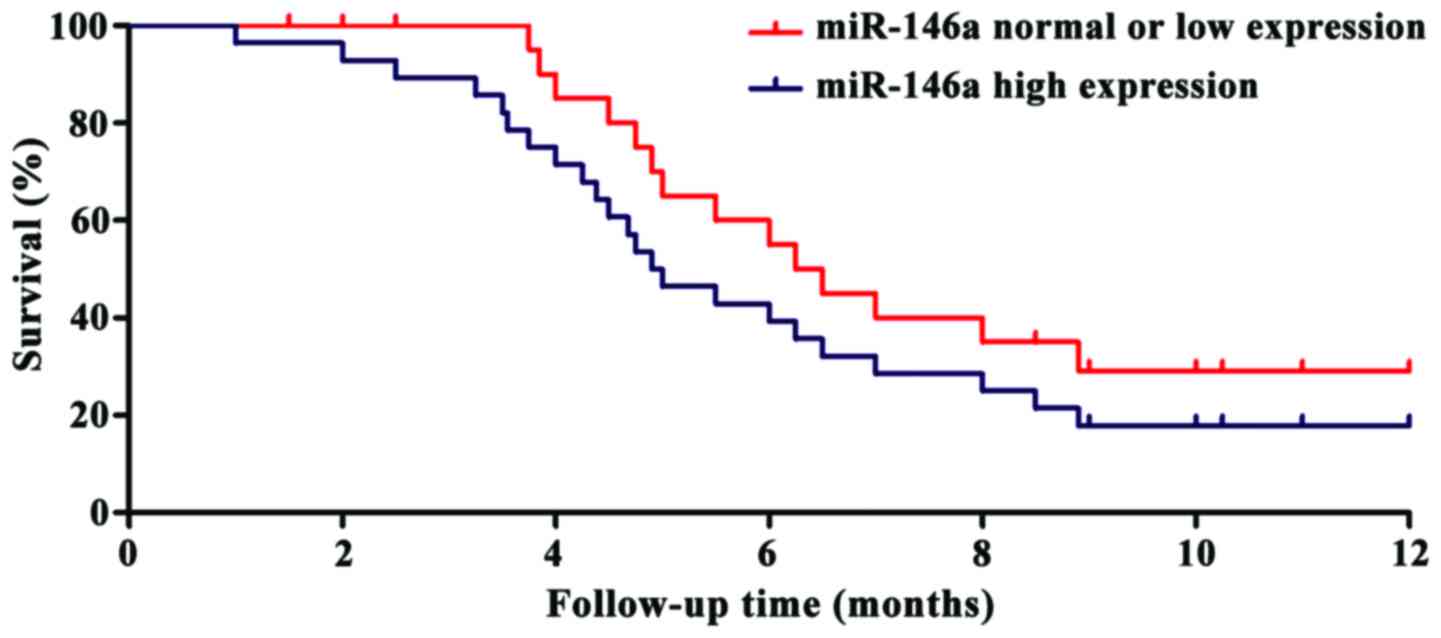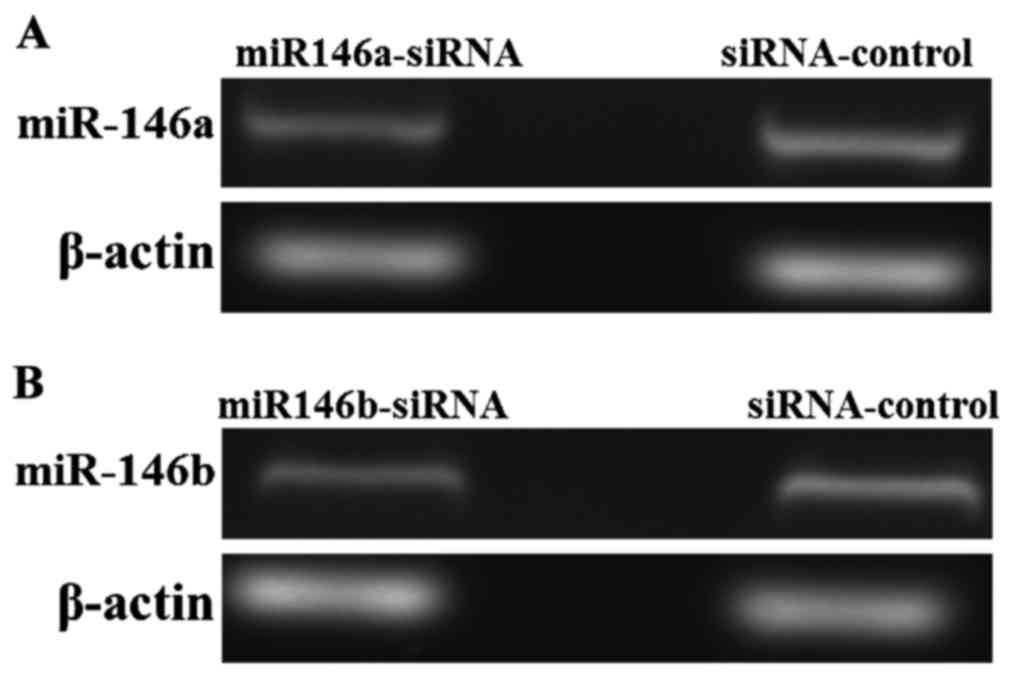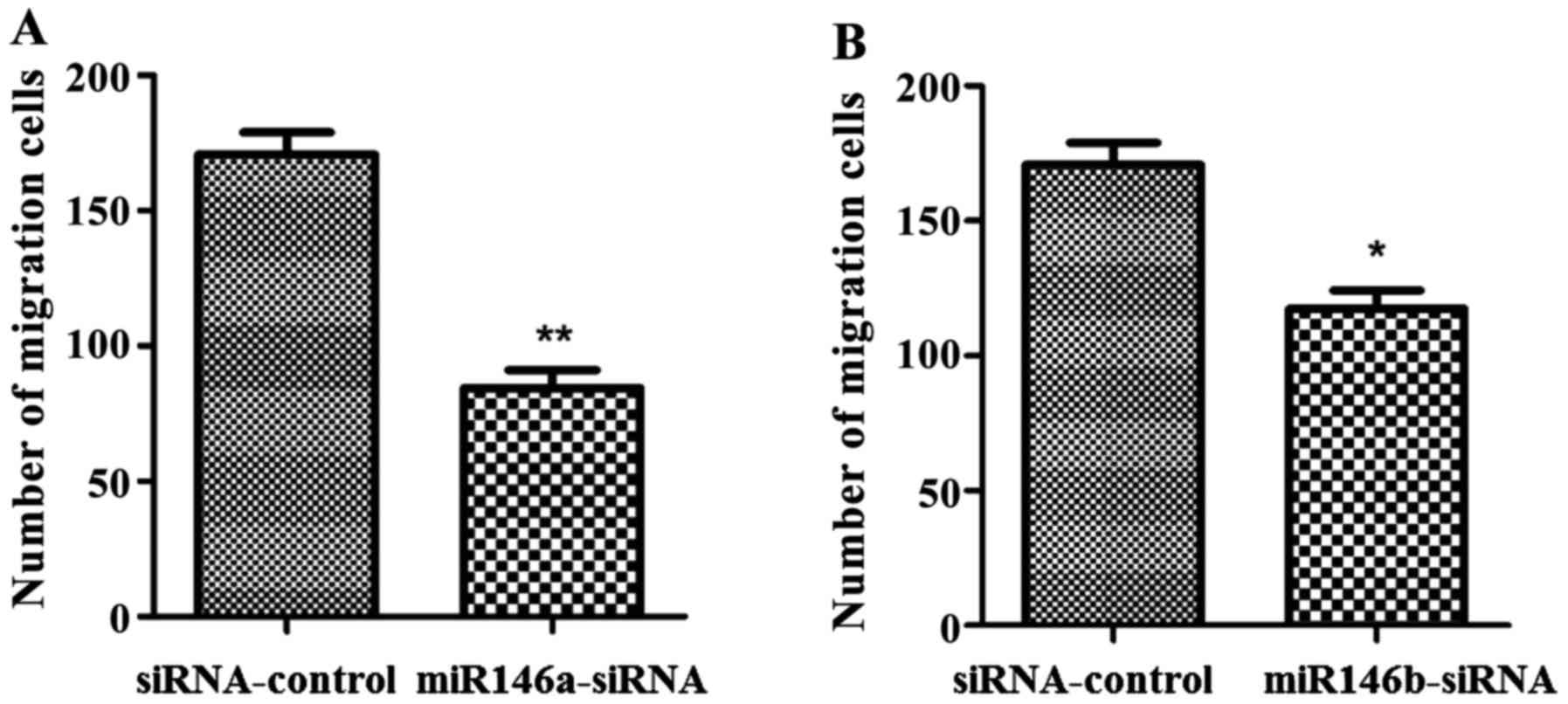miR-146a and miR-146b in the diagnosis and prognosis of papillary thyroid carcinoma
- Authors:
- Published online on: September 25, 2017 https://doi.org/10.3892/or.2017.5994
- Pages: 2735-2740
-
Copyright: © Qiu et al. This is an open access article distributed under the terms of Creative Commons Attribution License.
Metrics: Total
Views: 0 (Spandidos Publications: | PMC Statistics: )
Total PDF Downloads: 0 (Spandidos Publications: | PMC Statistics: )
Abstract
The present study investigated the relationship between the expression of miR-146a and miR‑146b with the occurrence and prognosis of papillary thyroid carcinoma. Experiments in vitro were also used to explore the effect of the knocked down expression of the miRNAs on growth and migration of papillary thyroid carcinoma cells. A total of 73 patients with papillary thyroid carcinoma admitted to Yidu Central Hospital of Weifang from September 2013 to September 2015 were enrolled in the study. Carcinoma samples were obtained from each patient, and adjacent tissues were used as control samples to determine expression levels of miR-146a and miR146b by semi-quantitative RT-PCR. An analysis was conducted to find possible correlations between the miRNAs expression levels and clinicopathological features in the patients followed up for one year after diagnosis. Additionally, to examine the function of miR-146a and miR‑146b on TPC-1 cells, the expression of miRNAs was knocked down using specific siRNAs. MTT and Transwell assays were used to evaluate cell proliferation and migration, respectively, in the miRNA cell lines. Finally, western blot analysis was used to analyze the expression of IRAK1 in PTC cancer cells. Our results showed that the expression levels of miR-146a and miR-146b in carcinoma tissues were significantly higher than the levels in cancer-free tissues (p<0.01). The relative expression levels of miR-146a and miR-146b in cancerous tissues could be associated with the pathological type and presence or absence of lymph node metastasis (p<0.05). Compared with the siRNA-control cell, MTT and Transwell assays showed that the cell growth and migration of TPC-1 cells were decreased in miR-146a and miR-146b low expression cells (p<0.01). Western blot analysis showed that the expression of IRAK1 in papillary thyroid carcinoma was higher than in adjacent tissue (p<0.01). Based on our findings, the expression of miR-146a and miR-146b correlates with the occurrence and prognosis of papillary thyroid carcinoma, and the expression levels of miR-146a and miR-146b seem to affect the cell proliferation and migration and regulate the expression of IRAK1 protein in cancer cells. Further studies are needed to validate our results to provide new targets for prevention and treatment of papillary thyroid carcinoma.
















